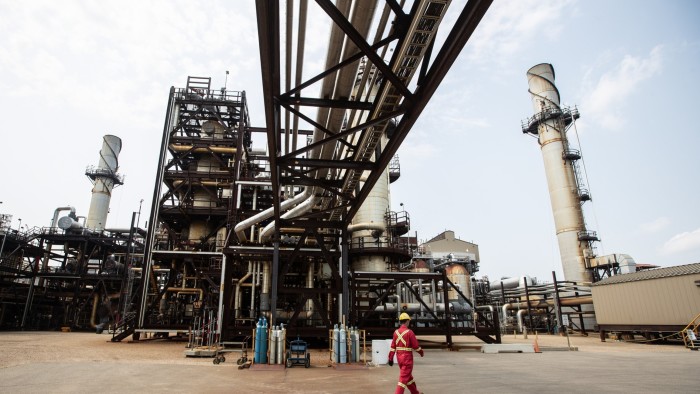Unlock the White House Watch newsletter for free
Your guide to what Trump’s second term means for Washington, business and the world
US efforts to remove carbon pollutants from the air have plunged this year, as uncertainty over the fate of renewable energy incentives and a labyrinthine permitting process chilled a sector crucial to remedying the effects of fossil fuels.
Applications for permission to store carbon scrubbed from the air fell by 50 per cent in the first quarter of 2025 from the same prior-year period — the fewest submitted since 2022 — according to data from Enverus Intelligence Research, an energy data and analytics group. And no permits were approved, down from three in the final quarter of 2024.
The process, called carbon capture, is a relatively new technology that the International Energy Agency has deemed “critical” to tackling global warming. Despite the rapid expansion of renewable energy, the majority of the world’s power is still generated by fossil fuels — making the technology essential for removing and storing harmful particles while continuing to allow for economic growth.
It involves sequestering carbon elements from gasses emitted at industrial facilities such as power plants and factories, and injecting them into wells buried deep in rock formations.
Industry experts said the decline in applications for these types of wells was partly due to uncertainty over US government tax credits and grants that support them.
The US Department of Energy on Friday announced the cancellation of $3.7bn worth of clean energy grants, of which funding for carbon capture and sequestration made up a large portion. Secretary Chris Wright said the Biden administration “failed to conduct a thorough financial review before signing away billions of taxpayer dollars” and that cancelling the funds was “in the best interest of the American people.”
In a statement, the Carbon Capture Coalition, an industry-backed group, called the cancellations “a major step backward,” adding: “Moves like this risk ceding America’s energy and technological leadership to other nations.”
Industry backers succeeded in preserving a tax credit for carbon capture in the current version of President Donald Trump’s tax and spending plan. But critics say the credit, at $85 per metric tonne, is not high enough, forcing companies to rely on a market for voluntary credits — where large emitting companies can buy credits from companies developing clean technologies — to shore up revenue.
The tax credit “is and continues to be insufficient to justify widespread deployment of post-combustion carbon capture”, said Rohan Dighe, an analyst at Wood Mackenzie.
The credits will be subject to transfer limitations after 2027, which could hurt the ability of small and medium-size developers to bring projects to market, according to Brenna Casey, a carbon capture associate at BloombergNEF.
“Transferability is really important to the market,” she said. Its phaseout “would kill a lot of projects . . . and distil the market down into the oil majors with huge tax liabilities”.
Tom Willis, CEO of Conestoga Energy, which has completed the drilling of a carbon well in Kansas, said: “In a perfect world we would have [transferability],” said “We would have to find a tax equity partner to invest in us.”
Of the 152mn metric tons of announced carbon capture capacity due to come online in 2035, 35 per cent is likely to be cancelled, according to BloombergNEF projections.
Brad Johnston, an analyst at Enverus Intelligence Research, said fewer permits were being approved due to slow processing at the Environmental Protection Agency. The company had forecast 40 approvals in 2025, which it has revised down to 14.
Projects that applied to the EPA in mid-2023 face an average wait of 30 months, half a year above the agency’s target.
To sidestep the EPA, some states are requesting permission to issue well permits on their own.
West Virginia, Louisiana, Arizona, Wyoming and North Dakota have received permission, while Texas is in the final stages of the approval process.
Some blame the application slowdown on an overcrowded queue of carbon capture ventures.
“When the [Inflation Reduction Act] was announced you saw a huge glut of applications coming in,” said Matthew Stevenson, chief revenue officer of Svante, which is backed by Chevron and recently opened the largest filter factory in North America. “It’s going to be hard to actually fill that capacity with capital projects and pipelines.”
